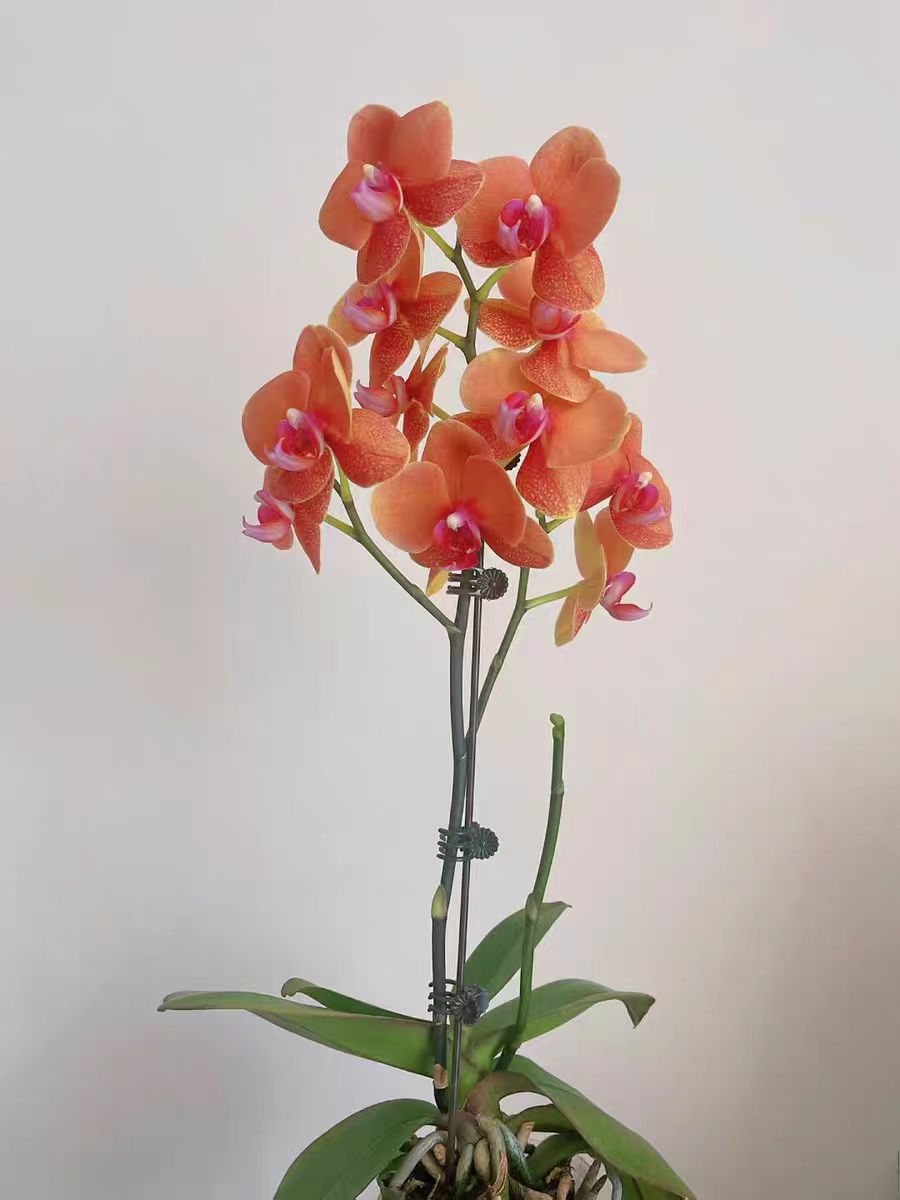Phalaenopsis, with its unique aerial root structure and reliance on sphagnum moss as a growing medium, has become a plant that many gardening enthusiasts both love and "fear." When we change the sphagnum moss for Phalaenopsis, we may find that the roots become empty or rotten. This not only affects the growth of the plant but can also lead to the death of the entire plant in severe cases.
Reasons for empty or rotten roots after changing sphagnum moss in Phalaenopsis:
Improper sphagnum moss treatment:
If new sphagnum moss is not fully soaked and disinfected, it can (lay hidden dangers). Unsoaked sphagnum moss is too hard and has poor air permeability, failing to provide a comfortable growth environment for the roots. This prevents the roots from breathing and absorbing water normally, gradually leading to empty roots. Unsterilized sphagnum moss may carry (large amounts of pathogens), which can rapidly multiply in the warm and humid environment after repotting, invade the roots, and cause root rot.
Improper watering management:
Incorrect watering frequency and volume after changing the sphagnum moss are common issues. After changing the sphagnum moss, the roots need time to adapt to the new environment. If watered too frequently at this time, the sphagnum moss will remain waterlogged for a long time, causing the roots to suffocate and rot due to lack of oxygen. Conversely, if watered too little, the sphagnum moss dries out quickly, and the roots cannot obtain sufficient water, leading to shriveling and empty roots. Additionally, watering directly on the leaves and flowers, where water remains for a long time, can easily cause pathogen infections, thereby affecting root health.
Damage during moss-changing operations:
During the process of changing the sphagnum moss, if the operation is not gentle enough, physical damage to the roots is likely to occur. The wounds of broken roots become entry points for pathogens, triggering root infections and gradual rotting. At the same time, excessive pruning of healthy roots will weaken the plant's absorption capacity, making it impossible for the roots to maintain normal water and nutrient balance, ultimately leading to empty or rotten roots.
Unsuitable environment:
Environmental changes after changing the sphagnum moss significantly affect the roots of Phalaenopsis. If the environmental temperature is too low (below 15°C) or too high (above 30°C), the physiological activities of the roots are inhibited, and their resistance decreases, making problems more likely to occur. In addition, low air humidity accelerates water evaporation from the sphagnum moss, leading to root water shortage; poor ventilation results in stagnant air, making it difficult for excess water in the sphagnum moss to evaporate, increasing the risk of root rot.
Treatment methods for empty or rotten roots after changing sphagnum moss in Phalaenopsis:
Promptly remove from the pot for inspection:
Once empty or rotten roots are found, immediately take the Phalaenopsis out of the pot, remove the sphagnum moss, and carefully inspect the root condition. Distinguish between empty roots and rotten roots: empty roots are usually dry and flat with a lighter color; rotten roots are black, soft, and emit a putrid odor.
Trim damaged roots:
Use a disinfected sharp pair of scissors to cut off all rotten roots until healthy white tissue is exposed. For empty roots, appropriate pruning is also necessary to prevent them from consuming the plant's nutrients. After pruning, apply carbendazim powder to the wounds or soak them in a diluted carbendazim solution for 10–15 minutes for disinfection to prevent wound infections.
Re-select and treat the growing medium:
Replace with new high-quality sphagnum moss. Soak it thoroughly in clean water for 1–2 hours in advance to allow it to absorb sufficient water, then soak it in a carbendazim solution for 15–20 minutes for disinfection. Remove and drain the water for later use, ensuring the sphagnum moss is clean, sterile, and has appropriate moisture.
Scientific potting and maintenance:
Choose a well-ventilated pot of suitable size. First, lay a layer of sphagnum moss at the bottom of the pot, place the treated Phalaenopsis in the pot, and carefully fill it with sphagnum moss to fix the plant. After planting, place the plant in a warm (18–25°C), well-ventilated environment with bright but indirect light. In the early stage, reduce the watering frequency, and water a small amount only after the surface of the sphagnum moss dries, keeping it slightly moist. Avoid fertilization and gradually resume normal maintenance management after the plant grows new roots.
Daily observation and prevention:
During subsequent maintenance, closely observe the plant's condition and regularly check the root growth. Adjust the watering frequency and volume reasonably according to seasonal and environmental changes, and maintain good ventilation and suitable temperature and humidity. At the same time, regularly disinfect the plant and growing medium to prevent pests and diseases, reducing the probability of empty or rotten roots recurring.
The problem of empty or rotten roots in Phalaenopsis after changing the sphagnum moss is not an unsolvable challenge. As long as we identify the causes, take scientific and effective treatment measures, and maintain the plant with patience and care, we can help the Phalaenopsis grow healthy roots again.
Why do the roots of Phalaenopsis become empty or rotten after changing the sphagnum moss?

Share with
Tagged in :




Leave a Reply